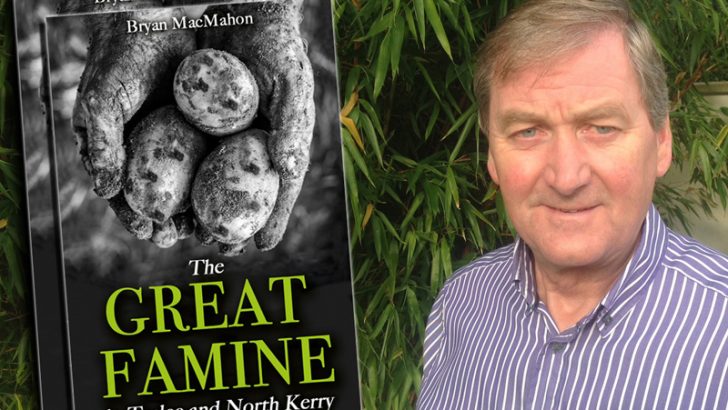The Great Famine in Tralee and North Kerry
by Bryan MacMahon (Mercier Press , €35)
The Great Famine, or ‘Black ‘45’ as it is known in the oral tradition, was a seminal event in the modern history of Ireland. It initiated the great emigration to the ‘New World’. Regrettably it also grafted on to the folk memory a far from friendly attitude to our English neighbours.
By contextualising the famine and analysing the many complexities associated with it, historians thankfully help to moderate that attitude. In this meticulously researched study, while not absolving the authorities in London of their responsibility, MacMahon describes the roles of many other villains and heroes in that cataclysmic event.
The statistics on the Great Famine are stark. Between 1845 and 1851 the population fell from eight-and-a-half million to six-and-a-half million; one million died of starvation and disease, another million fled from the country.
Kerry was the fifth in the list of counties hardest hit by the famine and had the unenviable distinction of coming second only to Antrim in the list of counties in which the highest proportion of the recorded deaths were attributed to dysentery.
A major cause of this dysentery, famine fever or cholera, was the eating by people of nettles, grass and other vegetables not usually used as food by human beings. By 1851 more than 30% of the population of North Kerry had ‘disappeared’!
The subject of MacMahon’s study is the area in Co Kerry north of a line from Fenit to Tralee, Castleisland and Brosna. His main sources are the Kerry Evening Post (Tory and Protestant), Kerry Examiner (Nationalist and Catholic), The Tralee Chronicle (liberal and neutral in politics), and the Cork Examiner. Making generous use of reports in the Kerry newspapers and the Cork Examiner the author takes the reader through the years 1845 to 1848.
Mixed messages
Initially in 1845 there were mixed messages with regard to the success or failure of the potato crop. When it became clear that the crop had failed the government purchased Indian meal and distributed it to the needy. Also a Relief Commission was established and public works were begun.
In 1846 so as not to interfere with market prices Indian corn was not freely distributed but sold at reduced prices. By March 1847, 714,000 people were employed in public works. At this stage soup kitchens were set up to replace the public works. By July 3,00,000 people were in receipt of food through food kitchens. In 1848 following another general crop failure a cholera epidemic began. Throughout those years the workhouses in Listowel and Tralee were not able to cope with the large numbers of the homeless and destitute.
There were villains galore in the dramatis personae of the Great Famine. Food was continually exported from Ireland during the famine period. Moreover, there is no doubt that, if a comparable crisis had arisen in England, the government would not have allowed the socio-economic structure of the time to stand in the way of supplying food to areas, where it was urgently required.
The landlords – those who were not absentees – lived luxurioursly in their mansions, while the tenants on their estates were dying of starvation. Trinity College, Dublin, was the owner of huge tracts of land in North Kerry and the Provost and the College were as heartless in dealing with their tenants as any of the other landlords in the area. There were those who sought to exploit the dire situation, such as greedy merchants and shopkeepers and an over-zealous evangelical preacher who stirred up sectarianism.
The Great Famine also produced its heroes. A few of the local landlords were actively involved in efforts to help the people in distress. The local Church of Ireland clergy were to the fore in all such efforts. There was widespread praise for a number of government and local officials.
Evidence
MacMahon provides a wealth of evidence showing that the priests of the area were indefatigable in their efforts to assist the starving people. As a result of their ministry to the sick and dying, four young priests in the area contracted the cholera and died. For their dedicated services during the darkest days of the famine the names of Jeremiah (Darby) Mahony (PP, Listowel), John McEnnery (PP, Tralee) and Eugene McCarthy (PP, Ballyheigue) were ‘in the mouths of the people’. The result was an exceptional bond in the area between priest and people which lasted for more than a hundred years.
There is scarcely a topic more challenging than the Great Famine, but Bryan McMahon’s splendid monograph is a wonderful template for other historians and scholars to replicate across the country.



